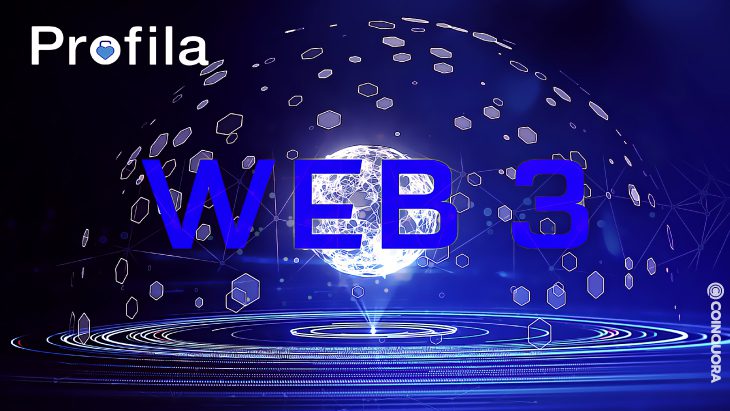As the internet continues to grow and evolve, the way people interact with services does too. Many things have changed regarding data control, platform logins, and more since “web1”. Although “web2” introduced some intriguing changes and upgrades, the big focus is on “web3” and how it will empower users once again.
The Advent Of Web1
Although the first iteration of the internet and its services did not look too appealing at first, it serves as the foundation for how we use the web today. One of the downsides of Web1 was the very small number of content creators compared to the number of people who wanted to consume content. As a result, hosting a website on an ISP-run web server was a common practice, as were free web hosting services. Popular companies during this erainclude Stamps.com, GeoCities (acquired by Yahoo in 1999 for $3.6 billion), Priceline.com, eHarmony, CNN, WebMD, and many more.
Some of the downsides to Web1 can be summed up as follows:
● Static pages were crucial on websites.
● Content was served from the server’s file system, creating a high degree of centralization.
● Web1 was a content delivery network in its infancy and often cost website owners money if too many people viewed their pages every month.
● Accessing services and platforms – the few that were available – required a username and password for every platform. Password managers were not a thing back then, and many users relied on the same login and password combination for every platform.
The use of separate logins and passwords for every service was good. It ensured many companies knew small bits about their users, but not enough to create full-fledged profiles. Moreover, the user had a sense of data control as they only shared what they wanted to. That doesn’t mean companies didn’t use the data in some way, but there were no data siloes like today either.
Thankfully, things started to take a more accessible and appealing shape in the years to come. The novelty aspect of Web1 didn’t wear off, but people gained a better understanding of what it all entailed and how they should protect themselves. Web2 would further enhance those aspects but also disrupt a few standards everyone had gotten used to.
Web2 Introduces Big Changes
While Web1 was all about static websites and a handful of services that people wanted to use, Web2shook things up significantly. It introduced millions more websites, user-generated content, usability, and even interoperability. That latter aspect helped facilitate the accessibility of platforms, as usernames and passwords were no longer the only options. Instead, people could use their Google account or social media profile – Facebook or Twitter – to access most platforms they came across.
The downside to using those third-party login solutions is data harvesting. Companies like Google and Facebook already know everything about the user and their online habits. Connecting those platforms to other online services creates an even bigger dataset on individual users. Unfortunately, these big companies do not reward users for sharing this data and making money from advertising campaigns and other practices.
Essentially, internet users have far less data control than they might think. While it is convenient to log in with Facebook or Google, it also means relinquishing data control. The convenience of interfacing with services should never come at the cost of personal data. Unfortunately, that is the way Web2 is designed, although that may not remain the case much longer.
Noteworthy companies that came around during the Web2 erainclude Apple, Amazon, Netflix, Twitter, Facebook, Digg, Meebo, MySpace, Yelp, Wikipedia, Pinterest, and more.
Web3 Puts The Users In Charge
The upcoming launch of Web3 will still maintain several elements from Web2. Content will be diversified, and there are no go-to platforms anyone should access. However, the gaps between different platforms and services will narrow through the introduction of the Metaverse. It will introduce a virtual world where everything is connected, and users can explore more interactive experiences than ever before.
More importantly, data control will be very different under Web3 guidelines. Through decentralization, big companies like Facebook and Google will gain access to far fewer data. Instead, users can create a digital identity – throughProfila, for example – and only share data with companies or services when they think it is necessary. Moreover, every time a Profila user shares data, they will receive monetary compensation.
Returning data control to the user introduces two key benefits. First, internet users are no longer “cows waiting to be milked for data” by every platform or site they visit. Second, they receive compensation for sharing data, as companies and brands receive more accurate information to act on. As a result, solutions like Profila can help usher in a new era of data control and user engagement in a Web3 environment.
That degree of data control will prove necessary in the Web3 era. The objective is to make content accessible across applications and internet-connected devices. Keeping one’s personal information safe from prying eyes will be paramount, yet it should not affect how people can use services everywhere. Speaking of services, prominent Web3 companiesinclude QuickNode, Alchemy, GuildFi, Binance, Coinbase, ConsenSys, Meta (formerly Facebook), Nvidia, Marqeta, and others.
Conclusion
The current Web2 era has given many improvements over Web1, but it has also come at a steep cost. User data is a common commodity today, even though it should never have been. Through the evolution into Web3, suers can wrest back data control and ensure no one has access to it if they don’t explicitly need it. Moreover, introduce monetary compensation for exchanging data with firms and brands.
Despite users being more in control of their data, the Web3 evolution will make us more connected than ever before. Lines between the real and virtual world will continue to blur, creating more immersive experiences than ever thought possible.


